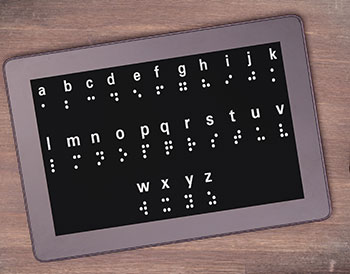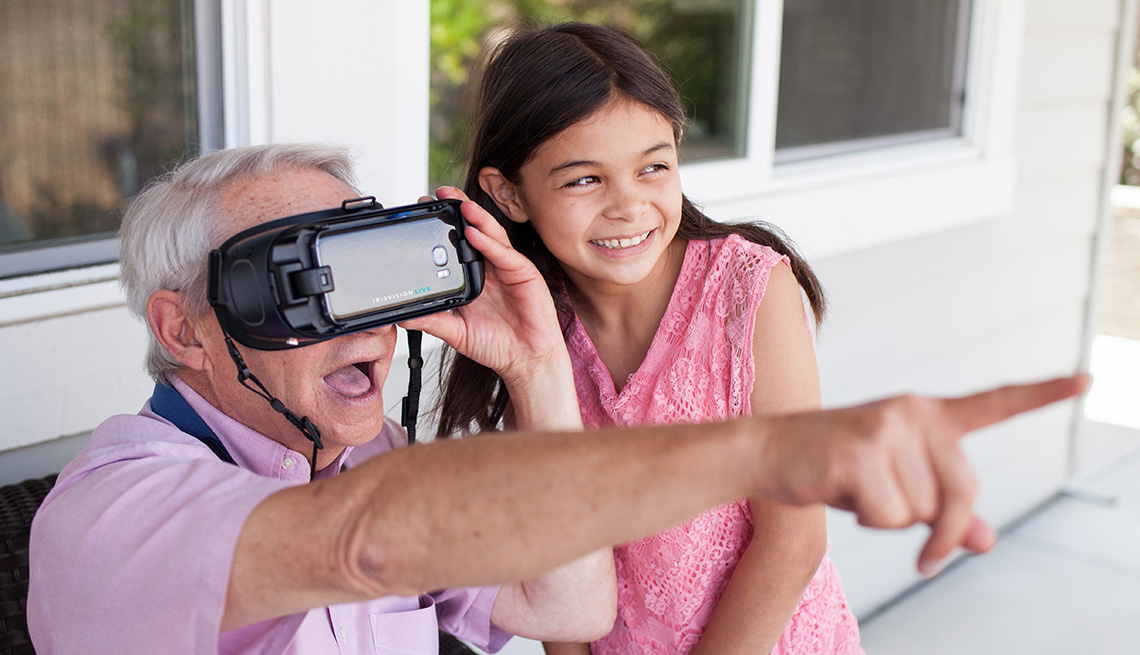Enhance Accessibility with Braille Displays and Notetakers
Enhance Accessibility with Braille Displays and Notetakers
Blog Article
An Overview to Life-altering Assistive Modern Technology for the Blind and Visually Damaged
The advancement of assistive innovation has ushered in a transformative period for people who are aesthetically impaired or blind, offering devices that boost autonomy and enrich day-to-day experiences. Developments such as clever navigating gadgets and AI-driven applications are redefining just how individuals engage with their surroundings, while available analysis options and smart home technologies assure to additional elevate the quality of life.
Smart Navigating Devices
Smart navigation tools are changing the means people who are aesthetically impaired or blind connect with their environment. These sophisticated innovations, which integrate general practitioners, audio feedback, and haptic signals, supply customers with critical details about their surroundings, improving their self-reliance and movement.
One popular example is the use of clever canes equipped with sensors that find challenges and provide real-time responses via resonances or audio cues. These tools allow users to navigate complicated atmospheres, such as hectic streets or crowded public rooms, with enhanced confidence. Additionally, wearable devices, such as wise glasses, are being created to aid in identifying faces, reviewing message, and identifying things, additionally increasing the user's spatial awareness.
Furthermore, wise navigation tools are progressively integrating fabricated intelligence to assess data and adapt to users' preferences. This personalized approach not only improves navigation effectiveness however likewise fosters a feeling of empowerment amongst users. As modern technology proceeds to development, the potential for smart navigation tools to develop a much more obtainable and inclusive globe for individuals that are visually impaired or blind remains appealing, eventually reshaping their day-to-day experiences and interactions.
Innovative Mobile Applications
Mobile applications are arising as effective tools for helping individuals who are blind or visually impaired, supplying a series of functionalities that boost daily living. These apps harness advanced innovation to assist in day-to-day jobs, improve availability, and promote independence.
One category of innovative mobile apps concentrates on aesthetic acknowledgment. Applications like Be My Eyes attach customers with sighted volunteers using video telephone calls, enabling real-time aid for jobs such as reading tags or navigating unknown atmospheres. Similarly, applications like Seeing AI use synthetic intelligence to define environments, checked out text, and identify items, providing users with critical details at their fingertips.
Another substantial area is navigating and positioning. Applications such as Aira and Nearby Explorer give audio assistance, aiding individuals navigate metropolitan spaces effortlessly. They supply customized aid, allowing for a much more certain exploration of the atmosphere.
In addition, health and wellness apps satisfy specific requirements, such as medicine monitoring and fitness tracking. These applications aim to promote an all natural approach to well-being, making sure that customers can keep their health independently.
Wearable Assistive Tools
Wearable assistive gadgets stand for a substantial advancement in technology designed to support individuals who are blind or visually impaired. These devices enhance movement and independence by offering real-time comments about the surrounding environment. Among the most notable wearable technologies are smart glasses equipped with sensing units and electronic cameras, which can recognize barriers and relay critical details with audio cues.

One more ingenious choice consists of wrist-worn gadgets that make use of ultrasonic waves to identify obstacles and provide navigational assistance. These devices typically include adjustable settings, enabling customers to tailor the informs to their specific needs.
The integration of synthetic intelligence in wearable assistive innovation is additionally significant, as it consistently boosts the precision and responsiveness of these gadgets. Generally, wearable assistive gadgets are transforming the lives of the blind and visually impaired, promoting higher autonomy and boosting top quality of life via ingenious services.
Available Reading Solutions
Accessible analysis options play an important function in enabling people that are aesthetically impaired or blind to involve with message across numerous styles. These services encompass an array of devices and innovations developed to boost reading experiences, from traditional print products to digital web content.
One famous solution is Optical Personality Recognition (OPTICAL CHARACTER RECOGNITION) innovation, which converts published message right into electronic style, allowing individuals to listen to or check out the content making use of screen visitors. Additionally, specialized e-readers furnished with text-to-speech capabilities supply customizable analysis experiences, enabling individuals to adjust font sizes and history colors for enhanced visibility.
One more reliable method is braille screens, which provide tactile responses by converting digital message into braille. This enables people to review touch, cultivating greater self-reliance and accessibility to literary works. Mobile applications made for reading scanned files or publications can empower individuals with immediate accessibility to a substantial collection of products (Screen readers for the blind).

Smart Home Technologies
Smart home innovations have actually transformed the means individuals that are aesthetically impaired or blind communicate with their living settings, enhancing both freedom and safety. These ingenious remedies leverage automation and connectivity to develop an available living area customized to the needs of individuals.
Smart audio speakers and voice-activated aides offer hands-free control over different tools, allowing individuals to readjust lights, protection, and temperature measures through easy voice commands. This performance lessens dependence on sighted help and cultivates a feeling of freedom. In addition, clever lights systems can be tailored to supply acoustic responses or responsive hints, allowing people to navigate their homes better.
Additionally, safety systems furnished with wise video cameras and sensors can send real-time alerts to users, boosting individual security without requiring visual confirmation. Automated door locks supply tranquility of mind, permitting individuals to secure their homes effortlessly.
Incorporating wise home innovations not only boosts day-to-day living however Wearable technology for low vision also encourages social communication with connected tools - OCR devices for the blind. With continuous advancements in assistive modern technology, the future appears promising, as even more services will certainly emerge to further equip individuals that are blind or visually damaged, guaranteeing a more independent and comprehensive lifestyle
Verdict
To conclude, the improvements in assistive modern technology for the blind and visually damaged represent a significant jump towards enhancing independence and lifestyle. Smart navigating devices, innovative mobile applications, wearable gadgets, easily accessible analysis solutions, and smart home innovations jointly cultivate a comprehensive environment. This integration of innovation not only enhances flexibility and day-to-day living yet also empowers individuals to engage fully with their surroundings, promoting greater autonomy and involvement in society.
Advancements such as wise navigating gadgets and AI-driven applications are redefining exactly how individuals engage with their environments, while easily accessible reading options and wise home innovations guarantee to further elevate the quality of life. As technology proceeds to breakthrough, the possibility for clever navigating tools to create a more inclusive and obtainable world for individuals who are visually impaired or blind continues to be encouraging, eventually reshaping their daily experiences and communications.
Wearable assistive gadgets stand for a substantial improvement in innovation designed to sustain people who are blind or aesthetically damaged. Amongst the most noteworthy wearable modern technologies are clever glasses geared up with cameras and sensing units, which can recognize challenges and relay essential details with sound hints.
Smart navigation devices, innovative mobile applications, wearable tools, available analysis options, and smart home innovations collectively cultivate an inclusive setting.
Report this page